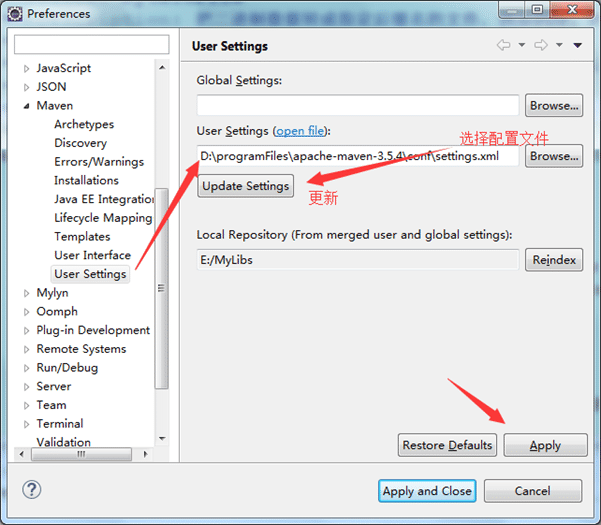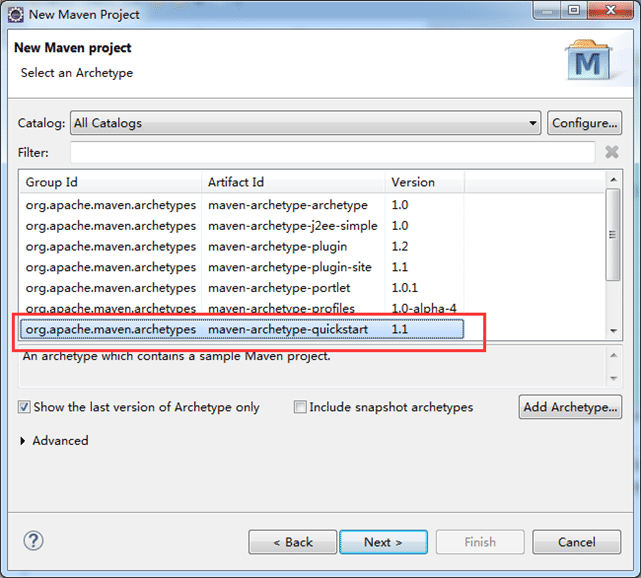Spring Boot maven框架搭建教程图解
摘要:让Spring应用从配置到运行更加快速,演示DIY Spring Boot框架时,如何配置端口号,如何添加日志。
Spring Boot 框架帮助开发者更容易地创建基于Spring的应用程序和服务,使得开发者能够快速地获得所需要的Spring功能。提供了非功能性的大型项目类特性,如(如内嵌服务器、安全、度量、健康检查、外部化配置),内部封装了tomcat的一些核心jar包,将发布封装了,因此不需要将项目(war包)发布到外部tomcat上。
可以在Spring Boot官网 https://start.spring.io/ 快速构建项目,这个简单易用,而且会自动生成启动类。本文重点介绍如何使用Eclipse构建。

搭建一个简单的、基于Restfull 风格的Spring web mvc 项目,结构如下:

环境:
eclipse:Oxygen Release (4.7.0);java version :'1.8.0_77';
maven:3.5.4;Servlet3容器(tomcat)
1. 配置maven的settings.xml
配置文件中加入了阿里巴巴的镜像。
<?xml version='1.0' encoding='UTF-8'?><settings xmlns='http://maven.apache.org/SETTINGS/1.0.0'xmlns:xsi='http://www.w3.org/2001/XMLSchema-instance'xsi:schemaLocation='http://maven.apache.org/SETTINGS/1.0.0http://maven.apache.org/xsd/settings-1.0.0.xsd'><!-- 仓库的地址--><localRepository>E:/MyLibs</localRepository><pluginGroups></pluginGroups><proxies></proxies><servers></servers><mirrors> <mirror> <id>alimaven-central</id> <mirrorOf>central</mirrorOf> <name>aliyun maven</name> <url>http://maven.aliyun.com/nexus/content/repositories/central/</url> </mirror> <mirror> <id>jboss-public-repository-group</id> <mirrorOf>central</mirrorOf> <name>JBoss Public Repository Group</name> <url>http://repository.jboss.org/nexus/content/groups/public</url> </mirror></mirrors><profiles></profiles></settings>
2. Eclipse配置Maven
Maven配置如下图所示,如果已经配置,可以忽略此步。

3. 创建maven项目
new-->other-->maven-->Maven Project-->next-->finsh,maven项目就建好了。



包名和项目名根据需求自定义。
4. 配置pom文件
<project xmlns='http://maven.apache.org/POM/4.0.0' xmlns:xsi='http://www.w3.org/2001/XMLSchema-instance' xsi:schemaLocation='http://maven.apache.org/POM/4.0.0http://maven.apache.org/xsd/maven-4.0.0.xsd'> <modelVersion>4.0.0</modelVersion> <parent> <groupId>org.springframework.boot</groupId> <artifactId>spring-boot-starter-parent</artifactId> <version>1.4.0.RELEASE</version> </parent> <groupId>com.spring.boot</groupId> <artifactId>TestWebApp</artifactId> <version>0.0.1-SNAPSHOT</version> <packaging>jar</packaging> <name>TestWebApp</name> <url>http://maven.apache.org</url> <properties> <project.build.sourceEncoding>UTF-8</project.build.sourceEncoding> </properties> <dependencies> <dependency> <groupId>junit</groupId> <artifactId>junit</artifactId> <scope>test</scope> </dependency> <dependency> <groupId>org.springframework.boot</groupId> <artifactId>spring-boot-starter-web</artifactId> <exclusions> <exclusion> <groupId>org.springframework.boot</groupId> <artifactId>spring-boot-starter-logging</artifactId> </exclusion> </exclusions> </dependency> <dependency> <groupId>org.springframework.boot</groupId> <artifactId>spring-boot-starter-log4j2</artifactId> </dependency> </dependencies> <build> <plugins> <plugin> <groupId>org.springframework.boot</groupId> <artifactId>spring-boot-maven-plugin</artifactId> </plugin> </plugins> </build></project>
5. 添加日志
项目使用了log4j2打印日志。首先,在src/main目录下新增文件夹resources,然后,在resources下创建log4j2.xml。这个日志配置比较简单,有待优化。
<?xml version='1.0' encoding='UTF-8'?><configuration> <appenders> <Console name='Console' target='SYSTEM_OUT'> <ThresholdFilter level='trace' onMatch='ACCEPT' onMismatch='DENY' /> <PatternLayout pattern='%d{HH:mm:ss.SSS} %-5level %class{36} %L %M - %msg%xEx%n' /> </Console> <File name='log' fileName='log/webApp.log' append='false'> <PatternLayout pattern='%d{HH:mm:ss.SSS} %-5level %class{36} %L %M - %msg%xEx%n' /> </File> <RollingFile name='RollingFile' fileName='log/webAppRoll.log' filePattern='log/$${date:yyyy-MM}/app-%d{MM-dd-yyyy}-%i.log'> <PatternLayout pattern='%d{yyyy-MM-dd ’at’ HH:mm:ss z} %-5level %class{36} %L %M - %msg%xEx%n' /> <SizeBasedTriggeringPolicy size='50MB' /> </RollingFile> </appenders> <loggers> <root level='INFO'> <appender-ref ref='RollingFile' /> <appender-ref ref='Console' /> </root> </loggers></configuration>
6. 设置端口号
在resources下创建application.properties。

1. 编写测试代码
javaBean定义如下,包括用户ID和用户名。
import java.io.Serializable;public class User implements Serializable { private static final long serialVersionUID = 7797704227043955944L; private Long id; private String name; // getter/setter omitted @Override public String toString() { return 'User [id=' + id + ', name=' + name + ']'; }}
控制器代码:
import org.slf4j.Logger;import org.slf4j.LoggerFactory;import org.springframework.web.bind.annotation.PathVariable;import org.springframework.web.bind.annotation.RequestMapping;import org.springframework.web.bind.annotation.RestController;@RestController@RequestMapping('/user')public class UserController { private static Logger logger = LoggerFactory.getLogger(UserController.class); /** * @Title view<br/> * @Description 示例地址 http://localhost:8080/user/100 <br/> * @param id * @return * @Author 楼兰的胡杨<br/> * @Time 2018-08-26 11:47<br/> */ @RequestMapping('/{id}') public User view(@PathVariable('id') Long id) { logger.info('接收的请求参数 begin --- id = {}', id); User user = new User(); user.setId(id); user.setName('Spring Boot'); return user; }}
通过在UserController中加上@RequestMapping 配置请求路径。通过在main方法中运行SpringApplication.run()来启动项目:
import org.springframework.boot.SpringApplication;import org.springframework.boot.autoconfigure.SpringBootApplication;@SpringBootApplicationpublic class Application { public static void main(String[] args) { SpringApplication.run(Application.class); }}
这时候项目就可以运行了,在Application 中run as-->java application 。控制台打印结果:

截图中红色方框圈中的文字说明了系统启动成功,而且,端口号是8080。此时在浏览器输入http://localhost:8080/user/100即可看到页面效果:

控制台打印结果:

以上就是本文的全部内容,希望对大家的学习有所帮助,也希望大家多多支持好吧啦网。
相关文章:

 网公网安备
网公网安备